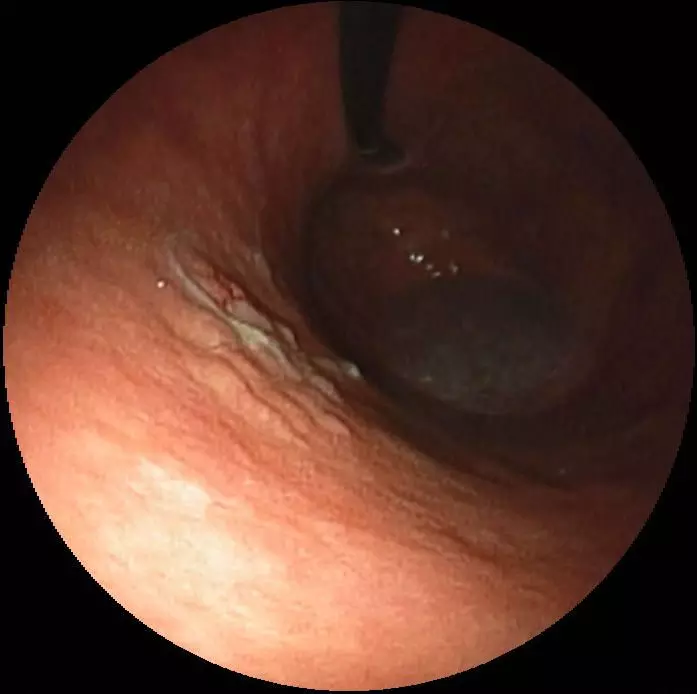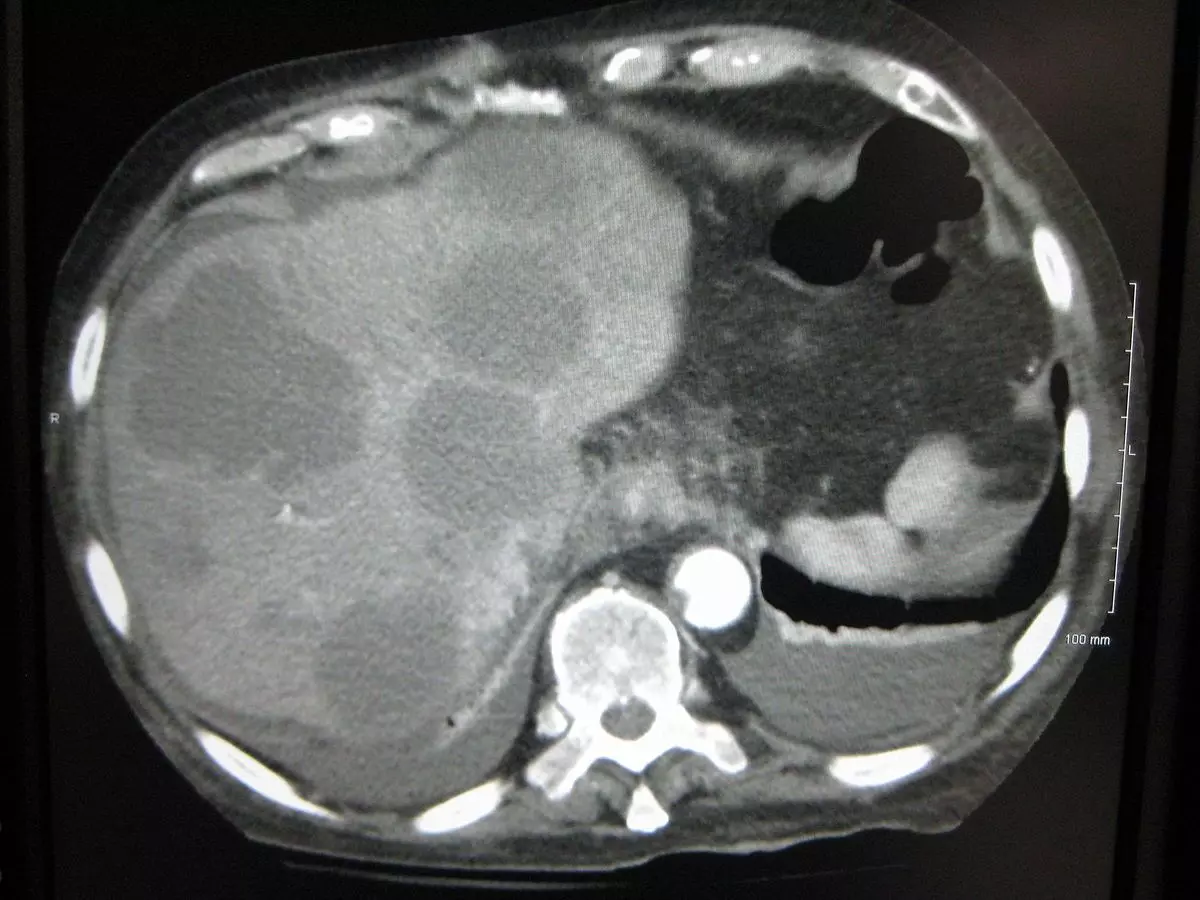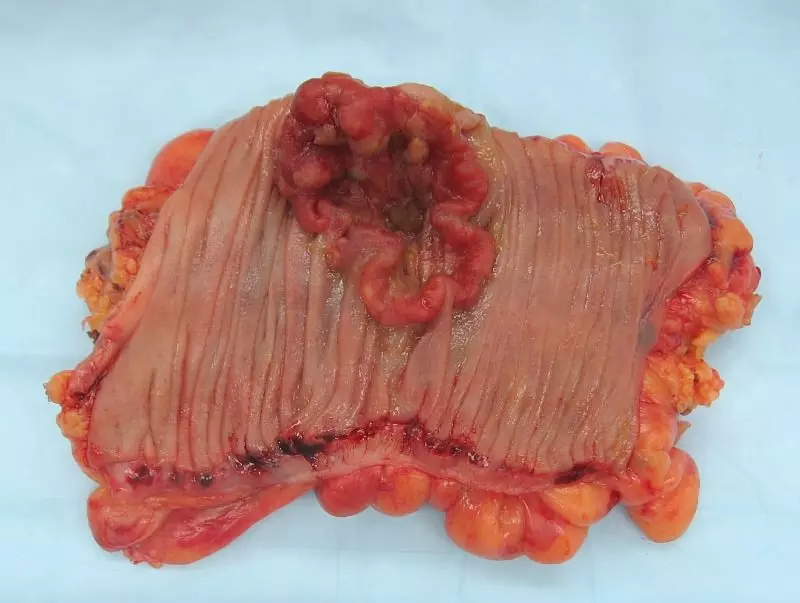Next Lesson - Gastroenteritis and Enterocolitis
Core
Cancer of the oesophagus is most often squamous cell carcinoma (SCC) because the inner lining of the oesophagus is stratified squamous epithelium. However, the lower third of the oesophagus can develop adenocarcinoma due to pre-malignant changes called Barrett’s Oesophagus. This occurs with chronic reflux disease, when the stratified squamous epithelium undergoes metaplasia to simple columnar epithelium to protect itself from the acid.
Risk factors for Barrett’s oesophagus are therefore very important and include increasing age, male gender, abdominal obesity, and acid reflux.
Smoking is the main risk factor for oesophageal SCC.
The key presenting complaint of a patient with oesophageal cancer is dysphagia (difficulty swallowing).
Other red flags symptoms/signs that may indicate oesophageal malignancy can be remembered by the acronym ALARM:
- A – Anaemia
- L – Loss of weight
- A – Anorexia
- R – Recent onset of progressive symptoms
- M – Melaena/Mass
Investigations for oesophageal cancer include blood tests (e.g. full blood count to check for anaemia), endoscopy, and CT/MRI scans.
Treatment may involve surgery if caught early, radiotherapy and/or chemotherapy. The prognosis for oesophageal is very poor.
Gastric cancer is most commonly an adenocarcinoma of the cardia or antrum of the stomach, because the epithelium of the stomach is simple columnar epithelium. It is also possible for the stomach to develop different sorts of cancers like gastric lymphoma or a gastric sarcoma, but these are rare.
Risk factors for stomach cancer include smoking, obesity, South-East Asian ethnicity, high salt diet, family history (e.g. hereditary non-polyposis colorectal cancer [HNPCC]) and history of gastritis/peptic ulcers. An important risk factor for the development of peptic ulcers is an infection of the stomach with Helicobacter pylori, so this is an indirect risk factor for stomach cancer.
The typical presenting complaint of gastric cancer is epigastric pain with an associated red flag symptom such as weight loss, a palpable epigastric mass, melaena and/or haematemesis. This makes gastric cancer tricky to diagnose because the symptoms can be quite vague, and this often means that the diagnosis is made late. Diagnosis is made through endoscopy.
Treatment may involve surgery, radiotherapy or chemotherapy, but as gastric cancer is often diagnosed late, these may not be curative options.
The prognosis for gastric adenocarcinomas is poor as it is usually not picked up until the cancer has progressed to a later stage. The prevalence of gastric cancer in the UK is not high enough for a national screening programme to be cost-effective, unlike in countries such as Japan which have a higher incidence of gastric cancer due to a higher prevalence of risk factors.

Image - Early gastric cancer in the body of the stomach
Public Domain Source by Med_Chaos [Public domain]
Hepatocellular carcinoma is the primary cancer of the liver and it is rare. However, it is relatively common for other cancers to metastasise to the liver because the entire venous drainage of the gastrointestinal system travels via the portal system of the liver. In patients who present with jaundice, it is important to check for other red flag symptoms such as weight loss, hepatomegaly with irregular borders and ascites, especially if the jaundice is painless.
Risk factors for primary liver cancer are conditions that involve chronic inflammation of the liver, such as chronic hepatitis infection and high alcohol consumption.
Treatment may involve surgery and/or chemotherapy but the prognosis is poor.

Image - Liver metastases on CT scan
Creative commons source by James Heilman, MD [CC BY-SA 4.0 (https://creativecommons.org/licenses/by-sa/4.0)]
The vast majority of pancreatic cancers are ductal adenocarcinomas.
Risk factors include smoking, recurrent or chronic pancreatitis, family history and male gender.
Pancreatic cancer can present with pain in the epigastric region that radiates to the back, jaundice and/or weight loss but symptoms do not usually arise until the cancer is at a later stage, making it difficult to diagnose early. As a result, it has a very poor prognosis. The ‘classical’, textbook presentation of pancreatic cancer is painless jaundice (i.e. jaundice with no other symptoms), but in reality, this is rare.

Image - Yellow sclera of jaundice
Public Domain Source by Centers for Disease Control and Prevention [Public domain]
Zollinger-Ellison Syndrome is a rare complication of a non-beta islet cell tumour that can occur in the pancreas or the duodenum. This tumour secretes gastrin, and this leads to the proliferation of parietal cells in the stomach, which in turn increases acid production. Patients typically present with symptoms of gastritis/peptic ulcers and diarrhoea.
Cancer of the small bowel is very rare. It is divided into 5 types: Stromal, Lymphoma, Adenocarcinoma, Carcinoid and Sarcoma.
Risk factors include Coeliac disease, inflammatory bowel disease, and genetic conditions such as familial adenomatous polyposis (FAP).
It presents late with the symptoms of small bowel obstruction – early vomiting, late constipation, and colicky abdominal pain/bloating.
Management may involve surgery, chemotherapy and/or radiotherapy.
Colorectal cancer is a common cancer in the UK, with the most common type being adenocarcinoma.
Risk factors include genetics (e.g. FAP and HNPCC), inflammatory bowel disease, smoking, obesity and a low fibre diet.
The most common presenting complaint of patients with bowel cancer is a change in bowel habit from what is normal for the patient, but there are certain symptoms that may indicate the location of the tumour (included in the table below). It is important to remember however that it is not a definitive list, meaning that the presentations of some patients may not fit this.
Differences between ascending and descending colon cancer can include:

Table - Differences between ascending and descending colorectal cancers
SimpleMed original by Laura Hansell
Investigations include blood tests such as chorionic embryonic antigen (CEA, a tumour marker used for bowel cancer), colonoscopy, and CT/MRI scans.
Treatment often involves surgical resection of the affected bowel with adjuvant chemotherapy or radiotherapy. Radiotherapy in particular is used in rectal cancer as the rectum is fixed in position by the anus so has a known location in which to target; it is therefore less useful in colon cancer because the colon does not have a fixed location.
The prognosis for colon cancer varies greatly depending on the stage at which the cancer is when it is first picked up.
In the UK, there is a screening programme that proves faecal immunoglobulin tests (FIT) every 2 years to those aged 60+. This involves sending a stool sample in the post to be analysed.

Image - Colorectal cancer
Creative commons source by Emmanuelm [CC BY-SA 4.0 (https://creativecommons.org/licenses/by-sa/4.0)]
Edited by: Dr. Maddie Swannack
Reviewed by: Dr. Thomas Burnell
- 2552

